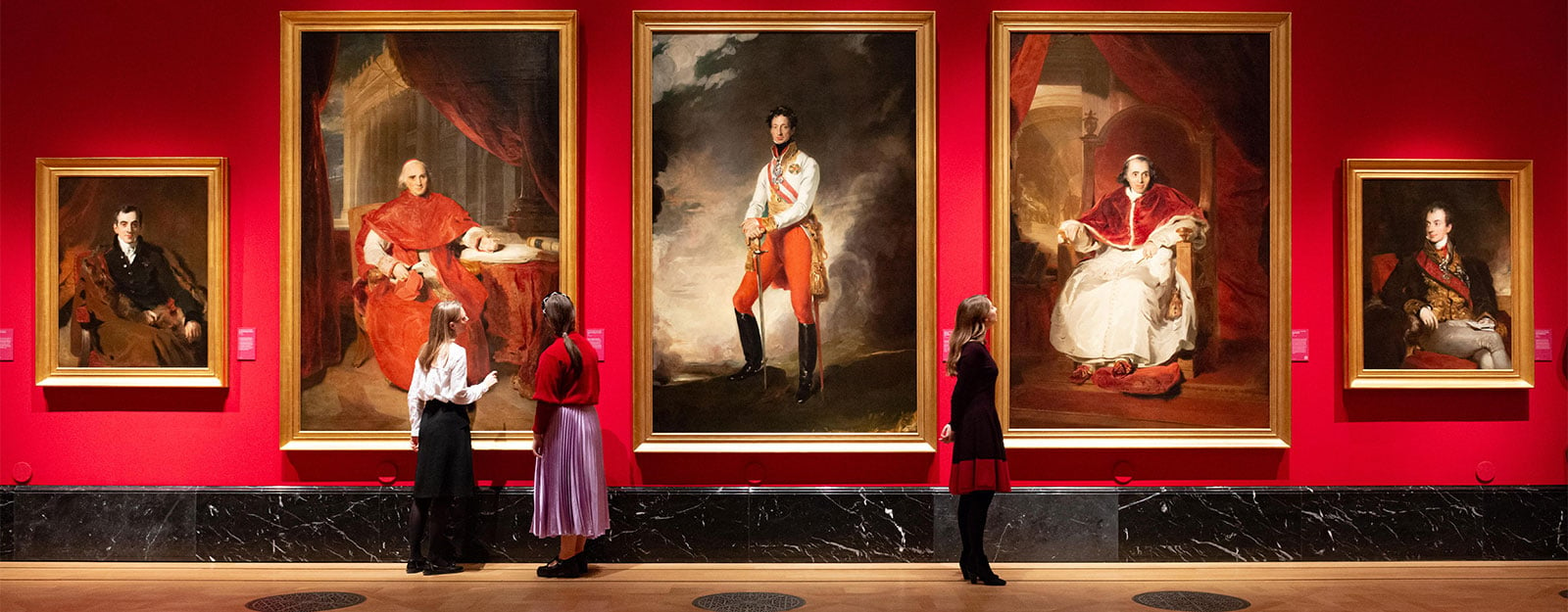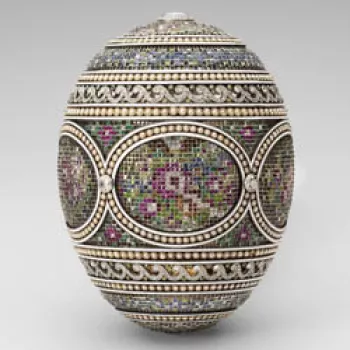
About the Collection
Learn more about the Royal Collection, one of the most important art collections in the world.
Fabergé
The Royal collection of works by Fabergé, the greatest Russian jeweller and goldsmith of the late 19th and early 20th centuries, is unparalleled in size, range and quality. It was acquired almost exclusively through the exchange of personal gifts between the Russian, Danish and British royal families.
Queen Alexandra, the wife of King Edward VII, was one of Fabergé’s greatest supporters. She and her sister, as well as the rest of the immediate family, usually exchanged birthday and Christmas gifts of pieces by Fabergé. These included the extraordinarily delicate hardstone flowers, small boxes, desk items, figures and models of animals and other small bibelots. The collection was expanded enormously by the commission instigated by King Edward VII of portraits of the animals at the Sandringham estate farm.
King George V and Queen Mary continued to enjoy collecting Fabergé, and it was they who purchased the three Imperial Easter Eggs in the Collection – the Colonnade Egg Clock, the Basket of Flowers Egg and the Mosaic Egg. The royal fascination for Fabergé has continued into more recent times. Queen Elizabeth The Queen Mother formed her own notable collection of flower ornaments, bibelots, boxes and photograph frames.









